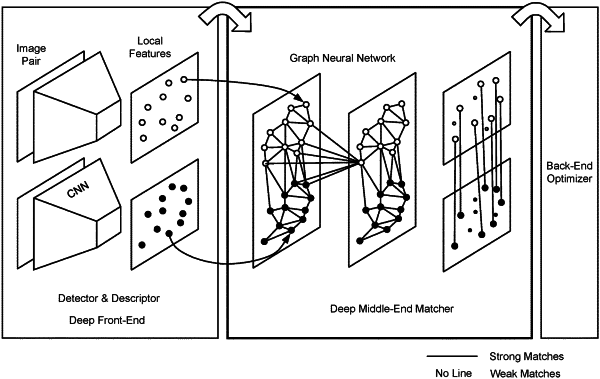| CPC G06N 3/084 (2013.01) [G06F 18/22 (2023.01); G06N 3/04 (2013.01); G06N 3/08 (2013.01); G06V 10/757 (2022.01); G06V 10/82 (2022.01); G06V 20/36 (2022.01); G06V 30/1988 (2022.01)] | 16 Claims |

|
1. A computer system comprising:
a computer-readable medium;
a processor connected to the computer-readable medium; and
a set of instructions on the computer-readable medium, including:
a deep middle-end matcher architecture that includes:
an attentional graph neural network having:
a keypoint encoder to map keypoint positions p and their visual descriptors d into a single vector; and
alternating self-attention and cross-attention layers that, based on the vector, repeated L times to create representations f; and
an optimal matching layer that creates an M by N score matrix from the representations f and finds an optimal partial assignment based on the M by N score matrix,
where:
p are keypoint positions,
d are descriptors,
L are a plurality of times,
f are representations,
M by N is a score matrix with a length M and a width N.
|